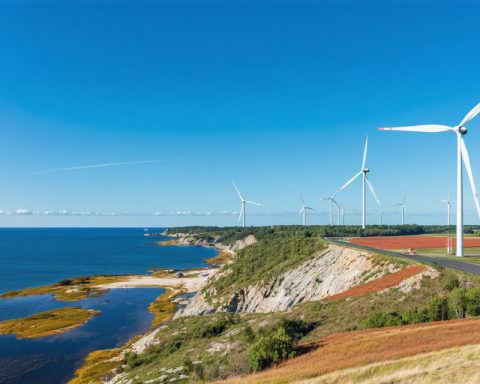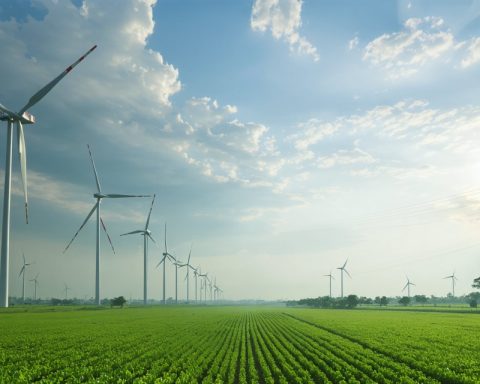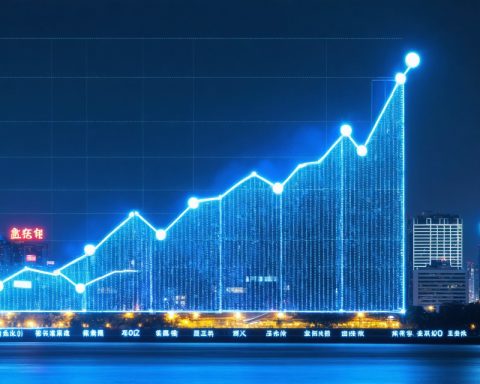- Germany is building the world’s first floating hydrogen import terminal near Lubmin, transforming green ammonia into hydrogen.
- This development aligns with Germany’s goal of achieving climate neutrality by 2045 and focuses on green hydrogen as a key energy source.
- The country plans to import a significant portion of the 95 to 130 TWh of hydrogen needed by 2030.
- The northern coasts, especially around Rostock and Lubmin, are central to this hydrogen transformation with new pipelines and infrastructure.
- The project is a major opportunity for international investors, spurring technological innovation and economic growth.
- Supportive legislation in Germany facilitates rapid expansion and investment in hydrogen infrastructure.
- This initiative promises a sustainable future and a dynamic marketplace for pioneering businesses.
Nestled against the Baltic coastline, Germany positions itself at the vanguard of a hydrogen revolution, with the construction of the world’s first floating import terminal for hydrogen near Lubmin. This innovative facility plans to transform green ammonia into pure hydrogen, subsequently channeling it onshore through an intricate network of pipelines. It’s a vision of fluid energy, where the sea becomes the gateway to a sustainable future.
Germany’s adventurous leap into hydrogen isn’t just an ambitious saga of energy transformation; it’s a declaration of commitment to its climate goals. With a target year of 2045 to achieve climate neutrality, Germany’s robust strategy shifts gears towards green hydrogen as its clean energy champion. The need to import a substantial portion of the 95 to 130 terawatt hours (TWh) of hydrogen and derivatives envisioned by 2030 makes this import terminal a pivotal development.
The northern coasts, particularly around Rostock and Lubmin, emerge as epicenters of this transformation. New pipelines and burgeoning infrastructure weave a sustainable symphony across the landscape, creating a thriving hub for technological innovation and economic growth. This development isn’t just an isolated project; it’s a call to action for international investors, providing fertile ground for those ready to seize opportunities in Germany’s expanding hydrogen economy.
As legislation primes the system for a swift expansion, the German government sets the stage for easier approval processes that encourage massive infrastructure investments. By betting on hydrogen, Germany promises not just a greener future but a dynamic marketplace ripe for pioneering enterprises to invest, innovate, and inspire. The Baltic coast is becoming the new frontier where energy dreams set sail.
Germany’s Hydrogen Revolution: Floating Terminals and the Future of Energy
How-To Steps & Life Hacks
1. Understanding Hydrogen Importation: The process begins with importing green ammonia, a hydrogen carrier. This is key because green ammonia can be easily converted back into hydrogen.
2. Conversion Process: At the floating terminal, green ammonia undergoes a chemical process known as ammonia cracking to extract pure hydrogen.
3. Channeling Hydrogen: The pure hydrogen is then transported onshore through a pipeline network, where it becomes part of Germany’s energy infrastructure.
4. Usage: Hydrogen can be used across various sectors, including transportation, manufacturing, and energy storage.
Real-World Use Cases
– Transportation: Hydrogen fuel cells are used in vehicles, providing a clean alternative to fossil fuels.
– Industrial Applications: Hydrogen serves as a critical component in refining metals and producing ammonia.
– Energy Storage: Hydrogen can store energy for use when production exceeds demand.
Market Forecasts & Industry Trends
The hydrogen economy is projected to grow significantly over the next decade. According to the International Energy Agency (IEA), the global hydrogen demand could increase sixfold by 2050, with the European market playing a crucial role.
Reviews & Comparisons
– Advantages of Hydrogen:
– Zero-emission energy source.
– High energy density.
– Versatility in application.
– Challenges:
– High production and transportation costs.
– Need for substantial infrastructure development.
Controversies & Limitations
Some controversies around hydrogen include:
– The “true” greenness of hydrogen, depending on the energy source for its production.
– Environmental concerns with ammonia production and conversion.
Features, Specs & Pricing
– Floating Terminal Specifications:
– Capacity for processing a substantial hydrogen quantity annually.
– State-of-the-art conversion technologies.
– Costs:
– Initial high investment with long-term cost advantages in a decarbonized economy.
Security & Sustainability
– Security: Robust systems are in place to handle and transport ammonia and hydrogen safely.
– Sustainability: Green hydrogen aligns with Germany’s 2045 climate neutrality goals.
Insights & Predictions
– Germany’s approach may set a benchmark, influencing other nations to invest in similar infrastructure.
– Continuous innovation and international collaboration are expected to reduce hydrogen production costs.
Tutorials & Compatibility
– Tutorials on hydrogen usage and storage can help industry newcomers understand implementation.
– Transitioning infrastructure for hydrogen compatibility will be crucial for broader adoption.
Pros & Cons Overview
– Pros:
– Advances green energy initiatives.
– Potential to revolutionize energy sectors.
– Creates economic opportunities.
– Cons:
– Technological hurdles and financial barriers to entry.
– Dependence on continuous policy support.
Actionable Recommendations
– For Investors: Consider Germany’s hydrogen initiatives for long-term investment.
– For Tech Innovators: Explore opportunities in hydrogen conversion and storage technology development.
– For Environmental Advocates: Engage with policymakers to support sustainable hydrogen production.
Quick Tips
– Stay informed about guidelines for hydrogen infrastructure development.
– Monitor policy changes that affect renewable energy investments.
Germany’s hydrogen revolution is more than an environmental initiative; it’s a global opportunity. For more insights, visit the International Energy Agency.









